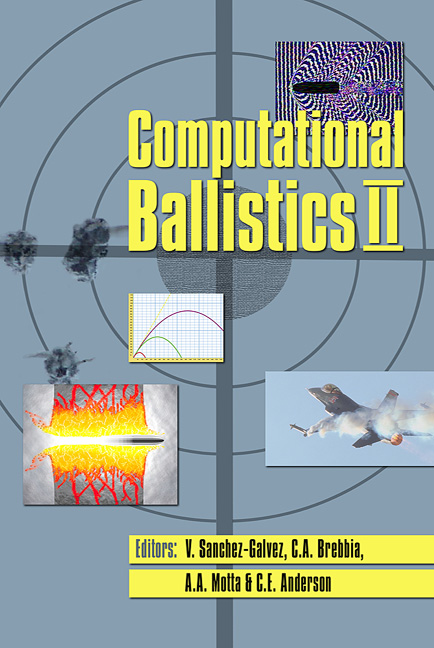Recent Advances In Lagrangian Computations For Ballistics Problems Involving Severe Distortions
Price
Free (open access)
Transaction
Volume
40
Pages
10
Published
2005
Size
13,401 kb
Paper DOI
10.2495/CBAL050091
Copyright
WIT Press
Author(s)
G. R. Johnson, R. A. Stryk, S. E. Ray & A. A. Johnson
Abstract
This article presents an overview of recent developments for Lagrangian algorithms applied to ballistics problems involving severe distortions. The primary development is a new algorithm that automatically converts highly distorted finite elements into meshless particles during the course of the computation. A large number of computations is provided to illustrate this capability, including parametric computations that examine the response of a small caliber projectile impacting a body armor component. The parameters include the projectile velocity, the projectile core material, the target thickness and the projectile impact point on the target. Keywords: Lagrangian computations, finite elements, meshless particles, impact, terminal ballistics. 1 Introduction A characteristic of ballistics problems is that the material is often highly distorted due to high-velocity impact and/or explosive detonation. During the past years this has limited the classes of problems for which Lagrangian approaches have been appropriate, because the traditional finite element grid can represent only limited distortions. In recent years, however, there have been significant improvements in material models, sliding/contact algorithms and element formulations. Meshless particle methods have also been developed, and some of these algorithms allow for very severe distortions in a Lagrangian framework. Furthermore, some significant advantages have been achieved by combining finite elements and meshless particles in the same problem.
Keywords
Lagrangian computations, finite elements, meshless particles, impact, terminal ballistics.




